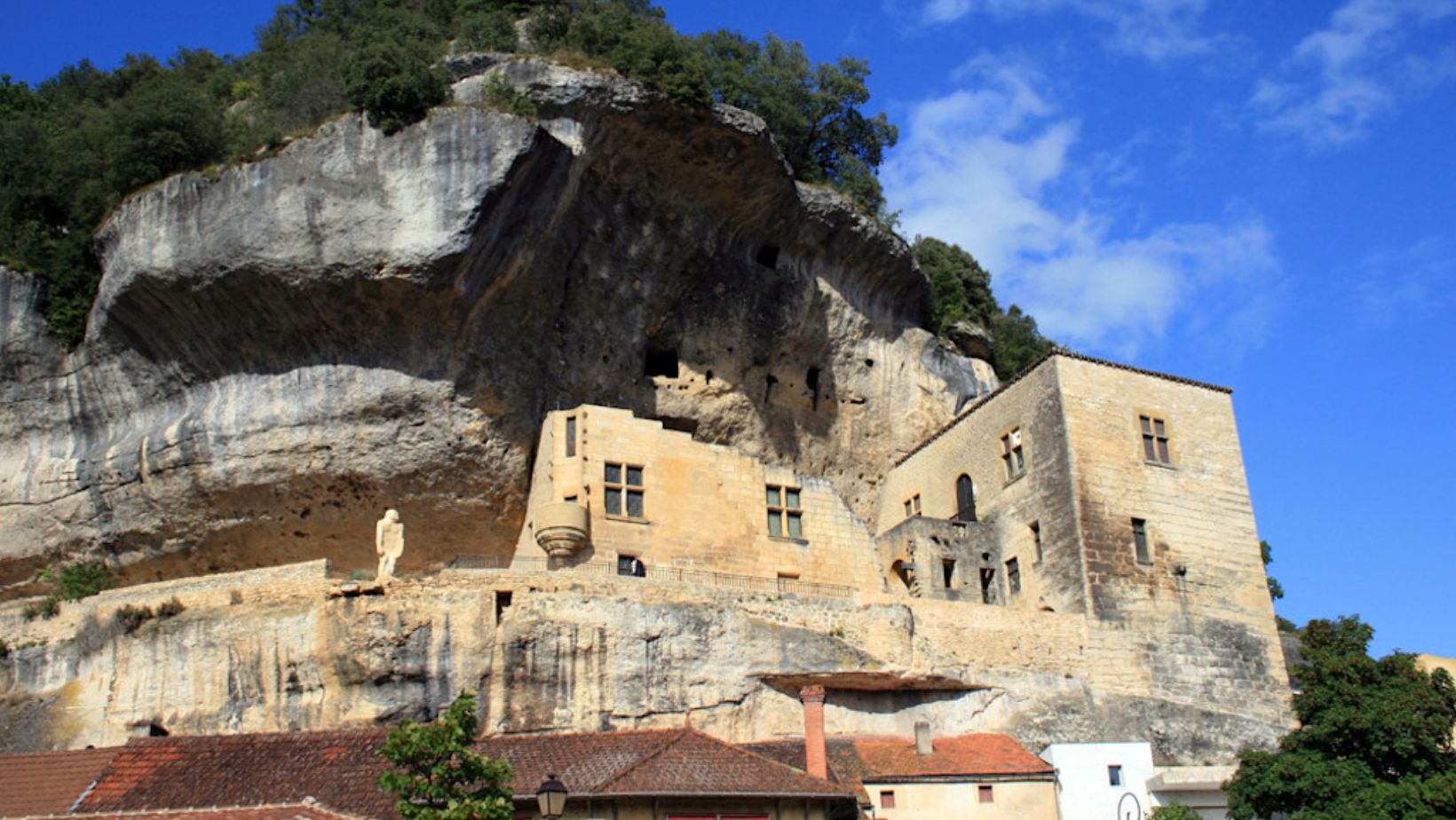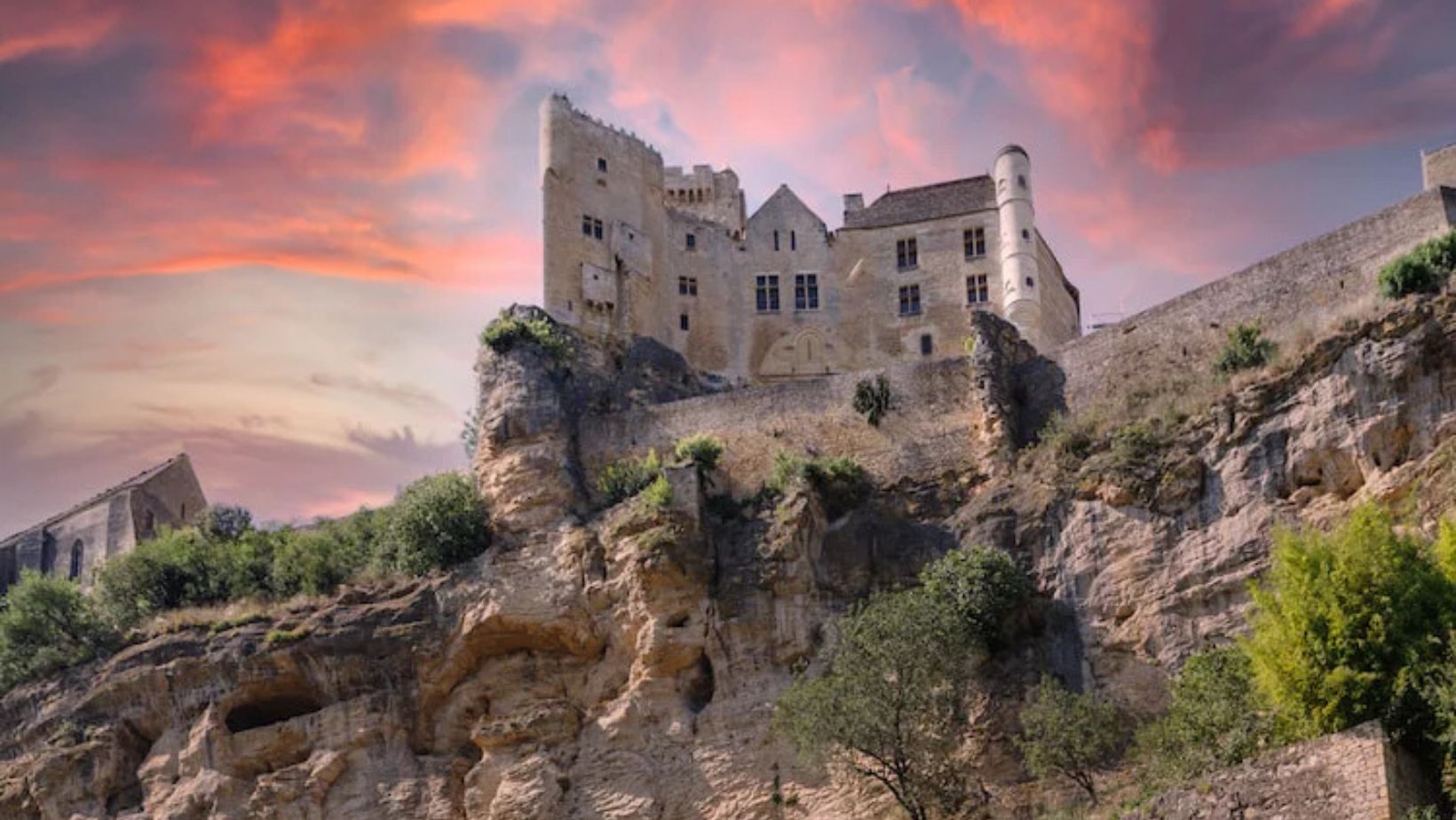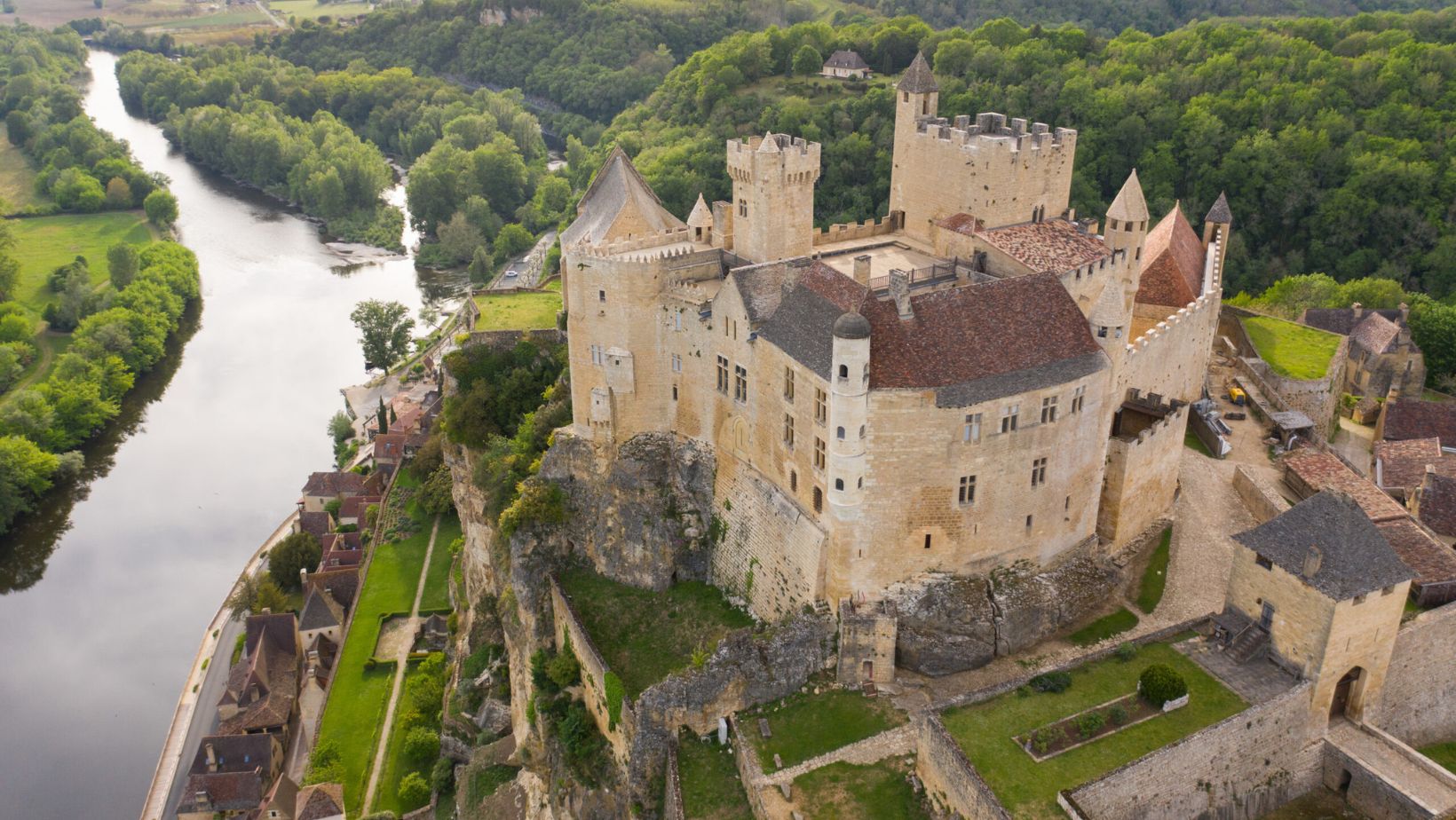Nestled in the heart of southwestern France, the Dordogne region is a treasure trove of history and beauty. Known for its lush landscapes, charming villages, and serene rivers, it holds a special place in the world of culture and heritage. The Dordogne is famous for its prehistoric caves, where ancient artworks still whisper the stories of our distant ancestors. Its medieval castles and hilltop towns offer a glimpse into the past, making it a must-visit destination for history enthusiasts and travelers alike. Join us as we uncover the hidden gems of this captivating region.
The Prehistoric Heart of France

The Dordogne region in southwestern France is known as the prehistoric heart of the country. It played a crucial role in the development of early human civilization, with evidence of human life dating back tens of thousands of years. The area is home to some of the most important prehistoric sites in Europe, providing insight into the lives of early humans. Its caves and rock shelters preserve art, tools, and remains from the Paleolithic period.
Among the key sites is the famous Lascaux cave, known for its stunning prehistoric cave paintings. These paintings, estimated to be around 17,000 years old, depict animals such as bison and horses. Another significant site is the Vézère Valley, which contains several caves and archaeological sites, many of which are UNESCO World Heritage-listed. These sites offer a glimpse into the advanced skills of early humans in areas such as art, tool-making, and hunting techniques.
The Dordogne’s prehistoric importance extends beyond the caves. It is a region where early humans left a lasting imprint on their environment, shaping the cultural landscape. Today, these sites continue to attract researchers and visitors alike, helping to preserve and understand the early history of human civilization.
The Lascaux Caves: Masterpieces of Cave Art
The Lascaux Caves, located in southwestern France, are home to some of the most famous prehistoric cave paintings in the world. These masterpieces, dating back around 17,000 years, depict various animals, such as horses, bison, and deer, showcasing the skill and imagination of early humans. The artwork is believed to have held significant cultural or spiritual meaning, possibly related to hunting rituals or beliefs about the natural world.
The discovery of the Lascaux Caves occurred in 1940 when four teenagers stumbled upon the entrance. Their find quickly became an archaeological sensation, revealing a stunning array of painted images. However, soon after, the cave’s exposure to air and human presence began to damage the paintings.
To protect the artwork, the Lascaux Caves were closed to the public in 1963. Efforts to conserve the site have been ongoing, with experts using advanced techniques to monitor and preserve the paintings. A replica of the caves, Lascaux IV, was opened in 2016, allowing visitors to experience the art without risking damage to the original site.
The Vézère Valley: A Prehistoric Sanctuary
The Vézère Valley, located in southwestern France, is a treasure trove of prehistoric sites, offering a window into the lives of early humans. The valley is renowned for its numerous caves, rock shelters, and open-air settlements that span over 400,000 years of history. It is part of the Dordogne region, which has one of the highest concentrations of prehistoric sites in Europe. These locations provide invaluable insight into early human life, art, and culture.
One of the most famous sites in the Vézère Valley is La Roque St-Christophe. This massive rock shelter has been inhabited by humans since the Middle Paleolithic period. It served as a residence for Neanderthals and later for Homo sapiens. The site is a stunning example of how early humans adapted to their environment, with evidence of living spaces, cooking areas, and symbolic carvings.
The valley also boasts other important sites like the Lascaux caves, famous for their detailed cave paintings. These artworks, which date back around 17,000 years, are some of the most remarkable expressions of prehistoric creativity. Together, these sites make the Vézère Valley a sanctuary of prehistoric heritage, offering rich archaeological evidence of our ancient ancestors.
The Early Inhabitants: Neanderthals and Homo sapiens
The Dordogne region in southwestern France holds significant evidence of early human life, particularly from Neanderthals and Homo sapiens. Neanderthals, the first to inhabit the area, lived around 100,000 to 30,000 years ago. They left behind tools, such as flint implements, which were essential for hunting and survival. These tools show a sophisticated understanding of their environment.
Homo sapiens arrived in the Dordogne approximately 40,000 years ago, bringing their own cultural advancements. They created art, such as cave paintings found in locations like Lascaux, showcasing their ability for symbolic thought. Settlements, though small and temporary, were scattered across the region, often near water sources for easier access to food. These sites reveal much about early human life and their connection to the land.
The tools and artwork left behind by both Neanderthals and Homo sapiens are key to understanding their daily lives and cultural practices. The complexity of their tools and their ability to adapt to different environments provide insight into their survival strategies. These early inhabitants not only survived but also developed early forms of art and social organization that shaped the future of humanity.
Medieval Dordogne: A Strategic Crossroads
During the medieval era, Dordogne was a key region due to its location in southwestern France. Situated at the crossroads of Aquitaine, Gascony, and the northern regions, it was vital for trade and military control. Its strategic position made it a contested area during various conflicts and power struggles. The region was frequently caught between the English and French during the Hundred Years’ War.
Dordogne witnessed numerous battles, sieges, and territorial shifts. Its castles, like Castelnaud and Beynac, served as strongholds for competing factions. These fortifications were essential for both defense and asserting dominance over the region. Dynastic struggles, particularly between the Plantagenets and the Capetians, intensified the importance of Dordogne.
In addition to military conflicts, Dordogne played a role in the broader political landscape of medieval France. As part of the Duchy of Aquitaine, it was often at the heart of royal ambitions. Its control was crucial for maintaining influence in southwestern France. This region’s significance only grew as dynastic conflicts continued throughout the medieval period.
Château de Beynac: A Fortress of the Hundred Years’ War

Château de Beynac, located in the Dordogne region of France, played a crucial role during the Hundred Years’ War. Its strategic position on a cliffside made it a stronghold in the conflict between the English and the French. The fortress was loyal to the French crown, despite its proximity to English-controlled areas. It was involved in several key battles, providing a defensive base for the French forces.
The architecture of Château de Beynac reflects the medieval military style, designed for defense. Its towering stone walls and imposing keep provided protection against attackers. The castle’s narrow windows were designed for archers to shoot while remaining shielded. The drawbridge and fortified gate further enhanced its defensive capabilities.
Inside, the castle maintains several original features, offering a glimpse into medieval life. The interior includes a series of rooms, including a chapel, kitchens, and living quarters. Visitors can explore its well-preserved structures, showcasing the ingenuity of medieval fortifications. Château de Beynac stands as a reminder of the turbulent period of the Hundred Years’ War.
Sarlat-la-Canéda: A Medieval Gem
Sarlat-la-Canéda, located in the Dordogne region of France, is renowned for its beautifully preserved medieval architecture. The town boasts narrow, cobbled streets lined with buildings that date back to the 12th century. Many structures still feature original facades, with intricate stonework and historic roofs that give the town its unique charm. Visitors can stroll through the town’s central square and admire the medieval atmosphere that has been carefully maintained over the centuries.
Sarlat played a significant role in the region’s history. During the Middle Ages, it was an important religious and commercial center, attracting pilgrims and traders. Its strategic location made it a key player in the local economy, especially during the 13th and 14th centuries. The town’s role in regional politics and culture is reflected in its architecture, with numerous churches and public buildings from the period still standing today.
Exploring Sarlat is like stepping back in time, offering a glimpse into the past while showcasing the region’s historical richness. The town’s preserved medieval buildings, combined with its historical significance, make it a must-visit destination for history enthusiasts and architecture lovers alike.
The Dordogne’s Role in the Hundred Years’ War
The Dordogne region played a significant role in the Hundred Years’ War, a long conflict between England and France from 1337 to 1453. Situated in southwestern France, Dordogne was a strategic area due to its location near the English-controlled Gascony. It became a key battleground for territorial disputes between the two nations. Several key events, such as the Battle of Castillon in 1453, marked the region’s involvement in the war.
The Battle of Castillon, a decisive victory for the French, effectively ended English control in the area. The region also saw numerous skirmishes and sieges, with castles like Château de Biron and Château de Monbazillac playing pivotal roles in defense. These fortifications were essential in controlling local power and defending against English advances. The Dordogne’s towns and countryside were frequently caught between French and English forces, resulting in widespread devastation.
The legacy of medieval warfare in Dordogne is still visible today. The region boasts numerous castles, fortifications, and medieval villages that reflect its turbulent past. Many of these structures, like the fortified town of Sarlat, have been preserved, offering a glimpse into the military strategies and resilience of the people during this time. The Hundred Years’ War left an indelible mark on the Dordogne, shaping its cultural and historical identity.
Preserving the Past: Archaeology and Conservation Efforts

Ongoing efforts to preserve prehistoric and medieval sites are crucial for understanding human history. Archaeologists work to protect these sites from natural decay, looting, and modern construction. Conservation methods range from carefully excavating fragile objects to stabilizing ancient buildings. These practices help ensure that future generations can study and appreciate these invaluable remnants of the past.
Modern archaeology plays a significant role in uncovering treasures, especially in regions like Dordogne, France. Dordogne is home to many prehistoric caves, such as Lascaux, famous for its ancient cave paintings. Archaeologists use advanced techniques like 3D imaging to map and document these sites without causing damage. These efforts not only reveal artistic and cultural insights but also help preserve these unique treasures for posterity.
Conclusion: Dordogne
The Dordogne region offers a captivating journey through time, with its rich heritage rooted in prehistoric caves, medieval castles, and Renaissance towns. From the world-renowned cave paintings of Lascaux to the stunning architecture of castles like Château de Beynac, the Dordogne immerses visitors in history at every turn. This blend of natural beauty and historical significance makes it a must-visit destination for history lovers. Whether you’re exploring ancient sites or discovering local traditions, the Dordogne provides an unforgettable glimpse into the past, preserving stories and landscapes that continue to inspire awe and fascination.
FAQs
What is the significance of the Dordogne region in prehistoric history?
The Dordogne is home to some of the most famous prehistoric sites in Europe, including the Lascaux Caves, known for their exceptional cave paintings dating back over 17,000 years. These sites offer a glimpse into early human life and creativity, showcasing one of the earliest forms of art in human history.
What are some key medieval landmarks in the Dordogne?
The Dordogne boasts several well-preserved medieval castles, such as Château de Castelnaud and Château de Beynac, which reflect the region’s importance during the Hundred Years’ War. These structures offer a window into the medieval military and architectural history of France.
How does the Dordogne’s landscape contribute to its cultural significance?
The Dordogne’s diverse landscape, featuring rolling hills, valleys, and rivers, has played a central role in the development of both prehistoric and medieval cultures. Its natural beauty and resources made it a vital location for ancient settlements and a stronghold for medieval fortifications.
Are there any notable prehistoric museums in the Dordogne?
Yes, the region is home to several museums dedicated to its prehistoric past. The Musée National de Préhistoire in Les Eyzies-de-Tayac showcases thousands of artifacts from prehistoric times, offering insight into the daily lives of early humans in the region.
How can visitors explore the Dordogne’s prehistoric and medieval heritage?
Visitors can explore the Dordogne by touring its numerous prehistoric caves, visiting medieval castles, and walking along historical trails that link the region’s rich past. Many sites offer guided tours, educational programs, and interactive exhibits to enhance the experience.

